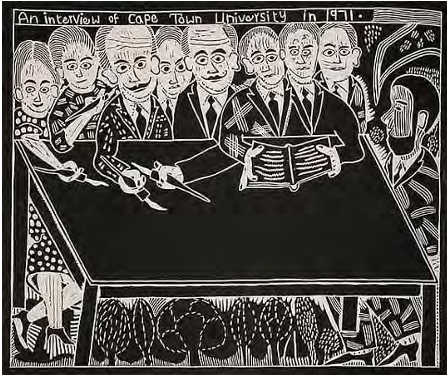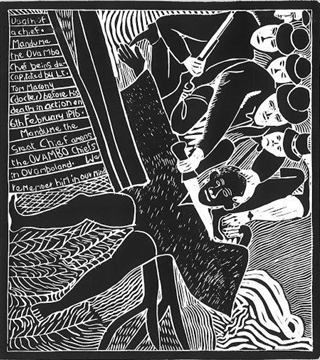COMEBACK SEASON BABY (Life in Middle Ages Early Christian Byzantine Gothic art Romensque John mofanjego)
Life in the middle Ages
313 Ad - christianty official
roads built to spread empire, spread christianity, contributed fall of Roman empire
churches supported pilgrims
Capitol (Byzantium) renamed Constantinople
divided east and west
forced to converted in western Europe
Constantine gave religious freedom
Iconoclasm
726 → 843
art stagnate as images of divine figures banned
Romanesque art
Position in system implemented at birth
education only available through church
new people → artisans and merchants
Gothic period
increase in growth from middle class proffesionals and cities
Early Christian Period
caricture earliest depiction of christs death on cross
adopted cross but avoided showing as humiliating
funerary in catacombs was the earliest
families would have cubicula dug to bury
romans would have sarcophagi → christians wanted the same with christian imagery
early christ and the apostles
catacmobs of domitilla
christ flanked by disciples → christ as teacher not a story
christ in classical garb holding scroll in left han, right oustretched into ad locutio gesture.
intially scared to portray christ and would use signs to get message across
first symbols → semantic, some purely verbal
chirho monogram → combination of xp in greek
fish adopted as rebus for christs name → initials in greek
lamb used, lamb of god which takes away sin of world
Throne of God as Trinitarian image, marble
earliest rep of trinity
son is indicated as Diadem and chlamys and spirit of dove
deer stands for the faithful
the sarcophagus of Junis Bassus, the image of christ
when ceased to be undeground, needed architecture → also needed new less confusing visual language
relief carving
number of incidents represented
well proportioned → classic
2 stories
christ riding into jerusalem on palm sunday → moment of triumph on earth
above, enthroned by st peter and st paul
on sarcophagus
christ not dressed in roman toga but greek palium
fresh young face
apollo as model
in a mosaic at revenna the beardless christ, wearing pallium of purple cloth
outstretch arms to bless the loaves and fishes, carried symbolically shorter disciples, covered hands
Byzantine Period
early church walls covered in paintings, mosaics better more expensive
tesserae, small peices of coloured glass, stone, metal or semi-precious stones
mosaics in San Vitale in Ravenna
tonal value was achieved, form of realism
technique allowed for mosaics to be integrated into architecture in tiled walls
mosaic in half dome apse of san vitale
in centre of hald dome, young bearedless christ flanked by angels
far right → bishop Ecclesius, founded of san vitale
flowery meadow of paradise
four rivers
golden sky
chirst seated on the orb of the world suspending in space
posed frontally
Justinian and his retinue, apse of vitale
byzantine emperor justanian and his empress theodora, bearing offerings
vessel with bread, wife with golden cup of wine → represent ceremony and communion
halo
accompanied by church officials and bishiops maximus.
attendants symbolise twelve apostles
bodyguads with chirho monogram
Empress theodora and attendants
empress on seperate panel → busy leaving
echeod by halo behind head
stylised
flat colour behind implying they are in the church
Architecture: Hagia Sophia
holy wisdom in constantinople
highest of sciences and maths at the time
originally, dome was brightly lit by windows inlaid with plain gold mosaic
command of justinian → trying to be better essentially
simple rectangle enclosing a square space, at corners there are pillars to support weight
dome, rests on foursphreical traingles which rise from piers
east and west of central dome are half domes with same diameter, below even smaller half domes
piers are ashlar, walls and vaults are thin brick set in mortar
brick for roofing was a daring innovation, dome collapsed in 558 and replaced by slightly higher one
other alterations made to strengthen
exterior is the product of long succession of expedients to butress the domer rather than looks
Romanesque Art
architecture is based on roman elements
bigger churches needed because of travellers
rounded arch used in base in this style
flat timber ceiling resulted in fires → made use of single tunnel vault with round diaphragm arches as support out of stone
Saint Sernin
11th/12th century
basilica plan (scross shape)
large barrel vault using series of arches to connect opposite piers
inadequate lighting
only enter through doors/windows in side aisle
emphasis on east end → enclosing choir and high altar
displayed relics
long nave, wide transepse for pilgrims
Durham Cathedral
combination of cross vault and buttress system made possible to include windows
pointed arches in Durham show beginning of Gothic architecture
Bayeux Tapestry
1066 and established for the first time at bayeux cathedral in 1077.
not tapestry, textile mebroided with wool linen, not woven
50cm hieght and 70.4 metres in length
narrative that tells story of Norman invasion of England
Duke william of nromady conquest of Hardol Godwinson (englands new king)
portrayed as justified, harold as an oppurtunist who brokehis oaths to edward the confessor, former king of england and to william
pictures with captions
latin
figures of animals used to deliver comments → refers to Aeop’s fables within decorative borders
figures sometimes fell into the border
linear, no 3d
some parts right to left for needed attention (seperated from main ones)
scene depicting death of edward the confessor
simplified with sole purpose to tell story
starts slow and buils elaborately to action climax
historically accurate
Gothic art and architecture
originally developed to bring sunshine
grew out of romanesque
more space and less materials to build
pointed arch and flying butress
pointed arch
most likely borrowed from islamic
seen in spain at the time
focussed on importance of light
relieved some of the thrust and became possible to reduce size of the columns or piers and reduce pressure on size of the columns or piers that supported the arch, aswell as covering large area and to rise to any height using pointed arch to cover nave
pointed arch could be seen in three dimensions where ribbed vaulting met in centre of celing of each bay. ribbed vaulting is another distinguishing feature of gothic architecture.
slender columns and lightr systems of thrust allowed for larger windows and more light → flying buttress
resisted outward thrust of vaulting → originally in romanesque but was concealed beneath roof and added to heaviness and lack of light
gothic was on outside
Keiskamma Project and relating to african art
tapestry is embroidery done in traditional manner
over 100 woman, tells story of eastern cape frontier
name from river in region
hamburg
carol hofmeyer taught the woman
studio space and commerical outlet
crosses boundary between art and craft → captures history
keiskamma tapestry used the same layout as Bayeux, similiar laid stitching and outlines
more colours than 8 used
hand dyed wool and mohair embroided terracotta brown hessian base
simplified and naive but expressive quality in people and animals
includes hills, trees foliage, roads and houses
John Muafangejo
born 5th october 1943 in ethunda lo Nghadi, ovamboland, angola
1956, moved ot namibia where he recieved art schooling-attending the onamunama holy cross missionary school and sainy mary’s anglican missionary school
studied art at rorkes drift centre in 1967, 1970 began teaching art at mission schools. 1974 invited back to complaete an artist-in-residence
know for lino prints, cut away inked and printed. back to front.
cheap meduim, doesnt need fancy machinery, made it popular
unambiguous language
his work was often a dramatic, his characters occupied a shallow space, similiar to mosaics. Often accompanied with text
spelling errors occured highlting artist educational background and educational inequalities found in the bantu education
style was highly decorative and used repetitive lines and shapes, style was pattern-like
stories from bible, current events or reconsctructions of historical events and commentaries on own experiences
artworks
Interview of Cape Town university 1971, lino-cut

interview at UCT to study art
sole black person, seated on one side and flanked by white academics
all have pens draw like weapons
he was rejected
death of chief 1971, lino-cut

portrays kiling of chief Mundume of Ovambo in 1916 by british officers
under his rule they were last of Ovambo to resist and remained independant of colonial forces.
Unbalanced with outstretched arms, sliding diagionally towards the viewer down the print.